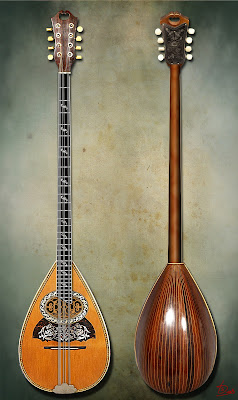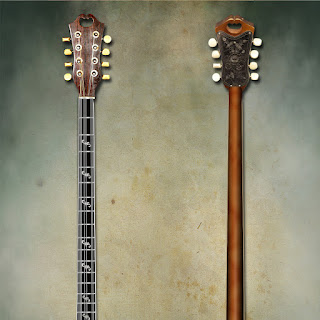Project Mandolino-tzouras
Revising the time back to 1936!
As I had mentioned in an earlier post, during the years of Metaxa's dictatorship in Greece, the bouzouki instrument "suffered" relentless persecution and prohibition by the Greek government,.
For this reason it borrowed elements from the mandolin to modify its body (bowl) and pass unnoticed from its pursuers, as mandola . Many mandolin and mandolas of that time, went to the luthier's bench and converted to miso-mpouzouka and tsourades, a process which continues until today only by few luthiers.
Many luthiers (some of them good friends of mine), due to their ideology standards, stand opposed to such a conversion these days, as they evaluate that musical instruments should be kept as close as possible to their exact original state, for which initially(the musical instruments) have been constructed by their lutheries.
From the other hand, historical evidence reveal that many conversions of that type occurred the years of 1936-1937.
And as only few luthiers, attempt to investigate the sound effect of such a unique conversion, they are using old mandolins which their play-ability is irreversible, (due to its damaged soundboard), resulting to the creation of a new musical instrument with a completely new soundboard (most of the times without the Neapolitan step).
But such a musical instrument (I would characterize it more as a tzouras) is too far apart from the sound output which a 1936 mandolin-tzourado with its authentic soundboard would produce.
And since up to today, only few people have heard the original sound of such a conversion , the attempt to convert a vintage mandolin to miso-bouzouko, deserves great importance in the historical research of the bouzouki ancestors' sound.
 |
| Created by S.Dimis (c) 2015 |
 |
| Created by S.Dimis (c) 2015 |
 |
| Created by S.Dimis (c) 2015 |

Comments
Post a Comment